HM (Bomb Vessel) Granado, 1756
HM (Bomb Vessel) Granado was ordered on September 14, 1741 and the keel was laid on November 18, 1741. Although it is uncertain who designed the Granado, it is commonly attributed to Thomas Slade, the naval Surveyor who oversaw the construction of the ship at Ipswich. Thomas Slade also went on to design famous ships such as HMS Victory.
The Granado was unusual in that she was designed to be used as either a sloop or a bomb vessel, being constructed with a conventional square stern. Launched on June 22, 1742, she was taken to Harwich, fitted out and put in commission as a sloop.
An Admiralty Order on July 15, 1745 was issued 'to fit her as a bomb' but this order was reversed on July 17, 1745 and the Granado continued as a sloop. It was not until 1756 that the Granado was fitted for the first time as a bomb vessel from an Admiralty Order on July 26, 1756. Between the launch in 1742 and her fitting as a bomb vessel in 1756 a number of changes had been made to her configuration as compared to the original Admiralty plans. The most noticeable of these are:
-
two extra 4-pdr carriage guns were added (Admiralty order of June 20, 1745) bringing the total 4-pdr carriage guns to 10;
-
two bow-chaser gun ports were added allowing accommodation of the extra guns either under the forecastle as bow chasers or at the fifth gunports;
-
the mortars as shown in the Admiralty plans are two 13-inch mortars, but when fitted as a bomb vessel this was actually changed to 1 x 13-inch and 1 x 10-inch mortar (This is confirmed by the provisions list on March 30, 1757 which details 50 large and 50 small shells.).
The Granado remained a bomb vessel until the Admiralty Order to refit her as a sloop was issued on March 20, 1760, but it was during the period prior to this date that she was involved in her most active role.
On January 22, 1759 the ship and squadron under command of Commodore John Moore anchored off Basse Terre. The following morning the citadel and batteries of Basse Terre were bombarded. By January 24 troops had occupied the forts of Basse Terre and Fort Royal, and the town had been devastated by fire caused by the wadding carcasses discharged from the Granado and other squadron bomb vessels.
On February 7, the fleet moved to attack Fort Louis at the entrance to Cul de Sac Bay. The attack began the following day and by February 15 the bombardment ceased with the capture of the Fort.
Following its brief reconversion as a sloop in 1760, the Granado was again converted to a bomb vessel in August, 1761 and she remained as such until she was sold on August 30,1763 for £575. During this period she was involved in the action of capturing Morro Castle and El Morro in the West Indies and the capitulation of Havana on August 13, 1762.
The Caldercraft offering features double planking on bulkhead construction in lime and walnut, 10 turned brass 4-pdr cannons complete with wooden carriages, 12 turned brass 0.5-pdr swivel guns, 1x13" and 1x10" brass mortars, highly detailed brass etched components, profiled brass rails, precision profiled walnut and ply components, all required blocks, black and natural hemp for rigging, 9 fully detailed actual scale plans and two comprehensive step by step colour instruction manuals including technical drawings and constructional photos of the prototype.
Specifications:
Scale: 1:64
Length: 785mm
Width: 340mm
Height: 590mm
This is my second wooden ship model, the first being the Royal Caroline (posted here last year). Although I find that my skills have improved somewhat since the Caroline build, I advise anyone venturing into this area of modelling to be prepared for rewards and frustrations in equal measure. The project was begun the first week of February and completed only this week, having accumulated 650+ hours' attention in the process.
Still, with the original, elegant lines of a sloop, it remains a very pretty model indeed.
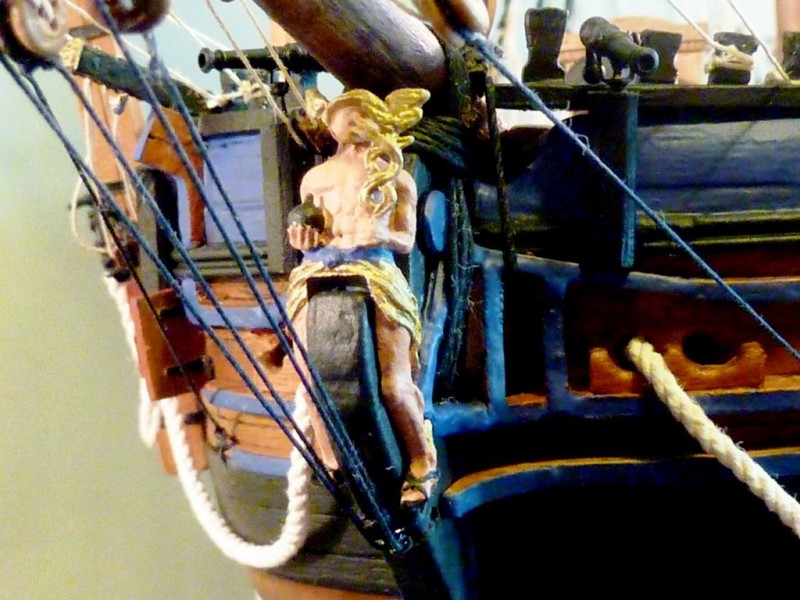
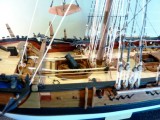
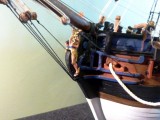
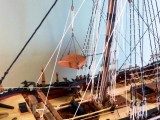
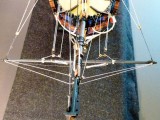
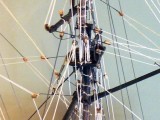
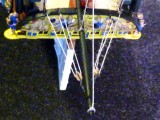

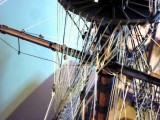

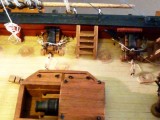
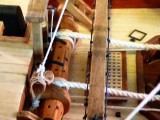
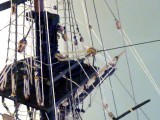
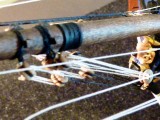
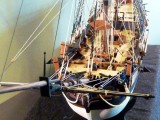
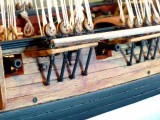
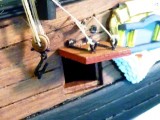
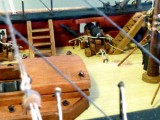

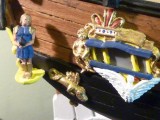


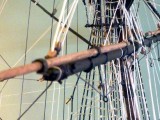


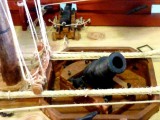
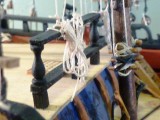
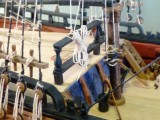

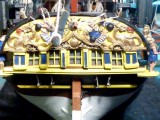
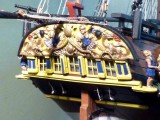
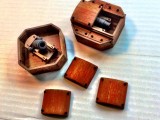
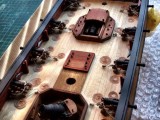

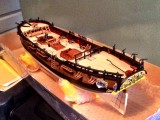

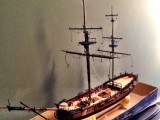
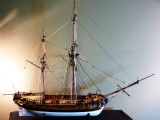
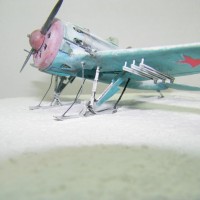

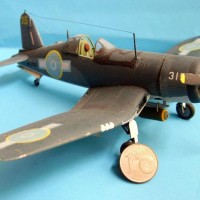

Interesting history, Rob, she must have spent almost as much time being converted as she did at sea... Whatever, she's certainly an elegant looking ship and I especially like some of your "on deck" pictures, there's a lot of detail to take in. I was interested to see how many hours you spent building her, every time I start a model I mean to keep a log, but never do for some reason.
Thanks, George. My 'log' was simply the days times an average of six hours modelling a day, but it was often longer, hence the 650 'plus' notation.
WOW! This is my pick of the month Rob. Absolutely a work of art with an interesting story to go with it.
Thanks, Morne.
I second that WOW! And a nice piece of naval history.
Cheers, Robert.
My hat's off to anyone who undertakes such a build. This turned out spectacularly, Rob. Very nice work indeed.
Thanks, Craig. I had the kit third-hand from a guy in our club, who sold it to me for £35 (still retails at £235), My oldest daughter had seen the Caroline on display in our house and asked if she could have the Granado for hers. She's ordered a ship's case via my contact in Sussex, so all will be in place in a month or two.
Very nice! Once again - WAAAYYY too much rigging for me, but looks to me like you handled masterfully.
I assume the term "bomb vessel" refers to being fitted with the large mortars? Were they usually used to shell shore-based targets in that configuration? Naval history is not my strong suit...
Yes all about the mortars, used to shell shore fortifications.